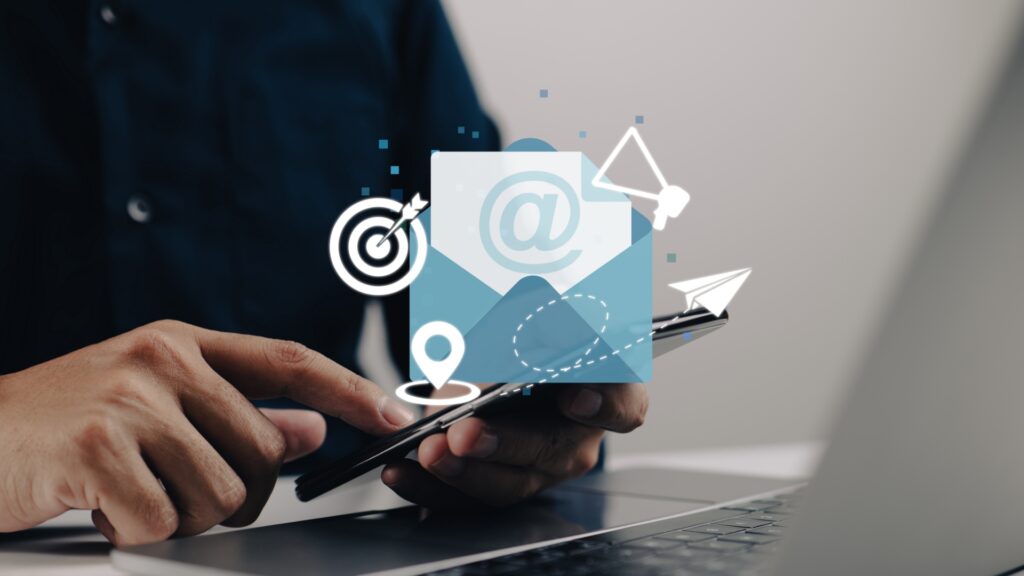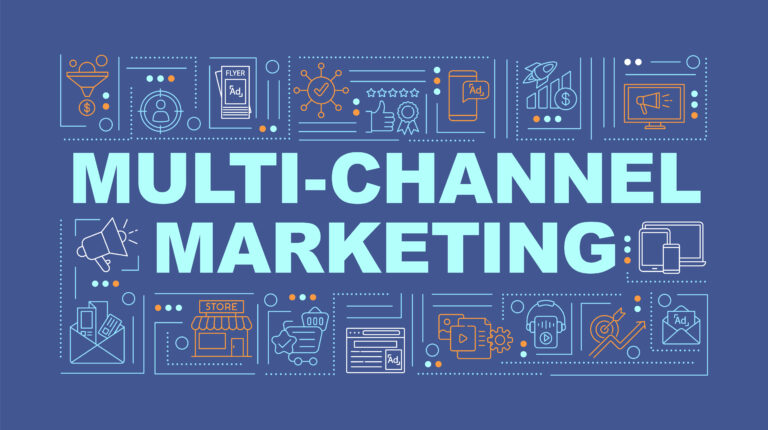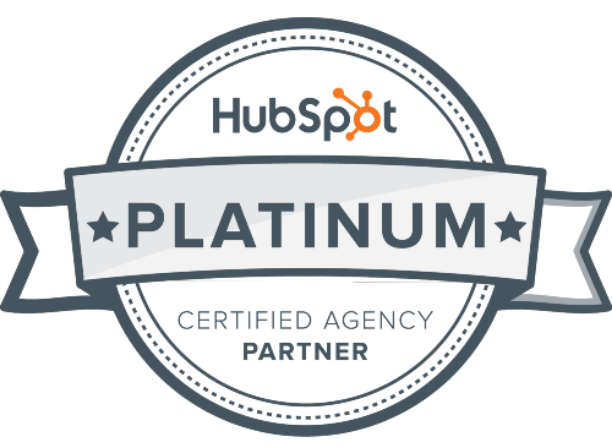In digital marketing, one tool holds steady among changing algorithms and rotating trends: email marketing. Brands that build a consistent, tactical email marketing strategy have a potent and versatile tool that can deliver impressive results.
The hard part: knowing how to shape and wield that useful tool.
Sporadically sending out unfocused email blasts to bulk lists: not the way to harness the full potential of email marketing. A consistent, segmented, goal-oriented strategy with defined and aligned measures of success: the hard way, but the right way.
The Power of Email Marketing
Before we dig into the how, what, and when of email marketing, let’s look at the “why.” A few benefits you can see with a well-designed email marketing plan:
Ownership and Control of Your Audience
A direct line to your audience that isn’t subject to the whims of billionaires’ algorithms? Sign us up. Investing in email marketing means investing in your owned audience—an audience you control and maintain. Your email list is a goldmine of individuals who asked to hear from you and want to know you. It’s up to you not to change their minds.
High Conversion Rates
Digital-marketing ROI data to know: According to Litmus, email marketing delivered an impressive 2022 average of $36 for every $1 spent. Email marketing works well for a few reasons, the fine-tuned audience, the ease, the immediacy, and the intimacy among them. A focused, strategic email builds trust while providing highly relevant value.
How do you harness the full power of email marketing? It starts with list building and flows into subject lines, segmentation, automation, and messaging.
1) Building an Email List
The most difficult (and arguably most important) aspect of successful email marketing: building and growing a list of high-quality contacts.
It’s easy to see why this is key. Your emails won’t convert if you’re sending them to the wrong people. So how do you start building a list of people who genuinely want to hear from you?
Make Website Sign-Ups Easy
The people visiting your website are at least tentatively interested in what you do and what you have to say. In a prominent place on your website, encourage them to join the list by being clear about the value your emails deliver. Make it obvious and easy to join.
Higher level of achievement: Build selection options into the email sign-up process so users can self-segment and choose the types of messaging that matter most.
Support Via Social Media Content
On your social media feeds, entice potential subscribers by tipping toward exclusive discounts or freebies offered only to your email audience. Use clear, strong calls to action.
Host Webinars or Events
A marketing equation that works: Offer value, earn attention. By hosting free webinars and workshops (in person or online), your target audience gets the benefit of your expertise. By requiring an email sign-up from participants, you’re asking for attention in exchange for that benefit. It’s a trade-off many users find valuable, and it helps build your email list and your brand’s thought-leadership rep.
Leverage Content Marketing
Tangible takeaways can work a lot like webinars. Create downloadable e-books or white papers with in-depth, actionable information that’ll be valuable to your audience. Ask for an email sign-up in exchange.
Run Contests and Giveaways
This tried-and-true social media/website tactic can be a quick way to grow an email list, but make sure your giveaway is relevant and aligned with your brand. You want to draw in subscribers who are genuinely interested in what you do, sell, or offer and who might become a devoted evangelist, not random folks who’ll fly by for a chance at a prize.
Important considerations when growing your email list:
Make sure you’re acquiring new subscribers fairly—and legally. Email marketing regulations (such as the CAN-SPAM Act in the United States) require companies to obtain explicit consent from subscribers and provide an easy way for them to opt out or unsubscribe.
Be transparent about how your email list is being used, too. Clearly communicate your privacy policy and how you intend to use subscribers’ email addresses. Building a healthy email list means building trust.
2) Shaping Email Subject Lines
A subject line can make or break your email’s open rate—it’s often what drives your subscriber’s decision to either open the email or send it straight to the trash.
Keep these tips in mind when you’re writing email subject lines:
Be Concise and Specific
Most subject lines allow up to 50 characters, but brevity is key. You want to clearly convey the value inside your email without getting too wordy. Also, consider how the subject line will look on mobile devices. (Hint: It’s gonna be truncated, and it’s gonna be small.)
Use Personalization
Many email marketing platforms allow you to personalize subject lines or address emails directly to the recipient. This extra step can be a big boost. Data shows that personalized subject lines correspond with 20% higher open rates, and personalized emails can lead to a 139% increase in click rate (over static, one-time sends).
Create a Sense of Urgency
Subject lines with words like “limited time” or “only 3 hours left” are tried-and-true motivators. Recipients feel an urgency to open your email as soon as it arrives in their inbox. (Just don’t abuse it or create false urgency.)
A/B Test Subject Lines
The nature of A/B testing—sending multiple variations to parts of your audience, having your software gauge the response in real time and shift to the better-performing option—means you’re likely to see better open rates, improved click-through rates, and additional engagement.
3) A/B Test Email Campaigns
A/B testing (or split testing) is a critical email marketing practice that you won’t want to overlook. Here’s how it can help:
It Optimizes Your Content
With A/B testing, you can fine-tune almost every element of your emails—from subject lines to copy, images, design, and call-to-action buttons. You can test the content itself, the order it’s organized in, the colors, wording, and layout. And you’re likely to see benefits in the short term (individual email performance) and long term (learning valuable lessons about what your audience likes).
It Helps You Understand Your Audience’s Preferences
By noting user preferences and behaviors, you’ll learn what resonates and you’ll be able to improve future emails, based on real data.
You may not choose to A/B test every single email you send, but focused testing and analysis can only help you improve and grow.
4) Tracking Email Marketing Metrics
As with all things digital marketing, data plays an important part in strategic email marketing. Gauging the effectiveness of an email campaign means monitoring and interpreting three key metrics:
Open Rates
The percentage of recipients who opened your email, rather than just deleting it.
Click-Through Rates (CTR)
The percentage of recipients who clicked on a link anywhere within your email.
Conversion Rates
For most email marketing, the end goal is to drive conversions—making a purchase, signing up for a webinar, downloading an e-book, or another action. This data shows how often your email directly led to that goal.
The goal, with these: to surpass averages for your industry and continue on an upward trajectory.
5) Harnessing the Power of Email Segmentation
Segmenting your email list means dividing it into smaller, more targeted groups based on specific criteria, like demographics, behavior, and purchase history. Most email marketing tools make this easy, and the process of sending to segmented lists gives you valuable information about your audience.
Segmentation groups in your email list could be “new subscribers” and “return customers.” Both may share many common interests, but their behaviors, preferences, and next steps are probably different.
Here’s why segmentation works:
You Can Personalize Content
Segmented email campaigns are tailored to each group’s interests and preferences, which increases the likelihood of engagement and conversion.
Segmented personalization in action: For your “new subscribers” list, you might send a discount code that would feel duplicative to “return customers” who already purchased that offer.
Irrelevant or repetitive emails often lead to unsubscribes. Sending fresh, appropriate, relevant content to each segment ensures that your emails resonate.
You Can Boost Engagement
Segmented emails tend to have higher open and click-through rates, which makes sense—they’re purposefully shaped to deliver content that aligns with the recipient’s interests and experiences.
6) Using Email Automation to Make Marketing Easier
Email marketing automation tools help small businesses sent timely, relevant emails without manual intervention – i.e., you set up the strategy and the content, and automation handles the execution
Some common email automations:
Welcome Emails
Automatically send a welcome email when someone subscribes to your list. This sets the tone for your email relationship and can provide valuable information or enticing offers that make for a memorable first touch point.
Drip Campaigns
Drip campaigns involve sending a series of pre-scheduled emails to nurture leads or guide customers through a sales funnel. Automation makes sure each email arrives at the right time, automatically.
Abandoned Cart Emails
If a user adds items to their card on your e-commerce site but doesn’t complete their purchase, automation can trigger a series of reminders or incentives that encourage them to return and convert.
Birthday and Anniversary Emails
Behind every email address is a real person with a real life and real feelings. Sending personalized birthday or anniversary emails will make subscribers feel valued and appreciated, and that can strengthen customer relationships.
7) Crafting Engaging Email Campaigns
With a basic understanding of strategic email marketing campaigns in place, the next step: drafting and crafting your emails.
A few aesthetic and functional things to keep in mind:
Be Intentional About Email Newsletter Design
The visual nature of email campaigns helps them succeed. Your email design should captivate your audience and reinforce your branding—consistent brand fonts, colors, and logos help your messages feel like the continuation of a conversation rather than a brand-new correspondence.
Make Sure You’re Mobile Responsive
According to HubSpot, most email views come from mobile devices (41%), so it’s essential that your content looks and functions well on smaller screens. Most email marketing platforms allow you to preview your designs in mobile to ensure the design and content aren’t compromised in mobile viewing. But it’s always a good idea to send test emails and double-check on desktop, mobile, and tablet.
Invite Action
In every email, use clear and prominent call-to-action buttons that stand out from the rest of the content. Action-oriented language (“Shop Now,” “Get Started”) encourages recipients to do what you want them to do.
Experiment With Interactive Elements
Polls, quizzes, or surveys can encourage engagement and interaction with your emails (and make them more fun).
Encourage Social Sharing
Help your audience evangelize for you by including social sharing buttons. This encourages recipients to share your content with their network, extending your reach and potentially expanding your audience.
8) Pair Up With a Trusted Partner
Looking to explore a broader email marketing approach, but struggling with time or expertise? Snapshot’s ranks include a crew of digital marketing experts who live and breathe email marketing strategy.
Contact the Snapshot team and tell us about your business, your email marketing needs, and your goals. We’d love to help.







